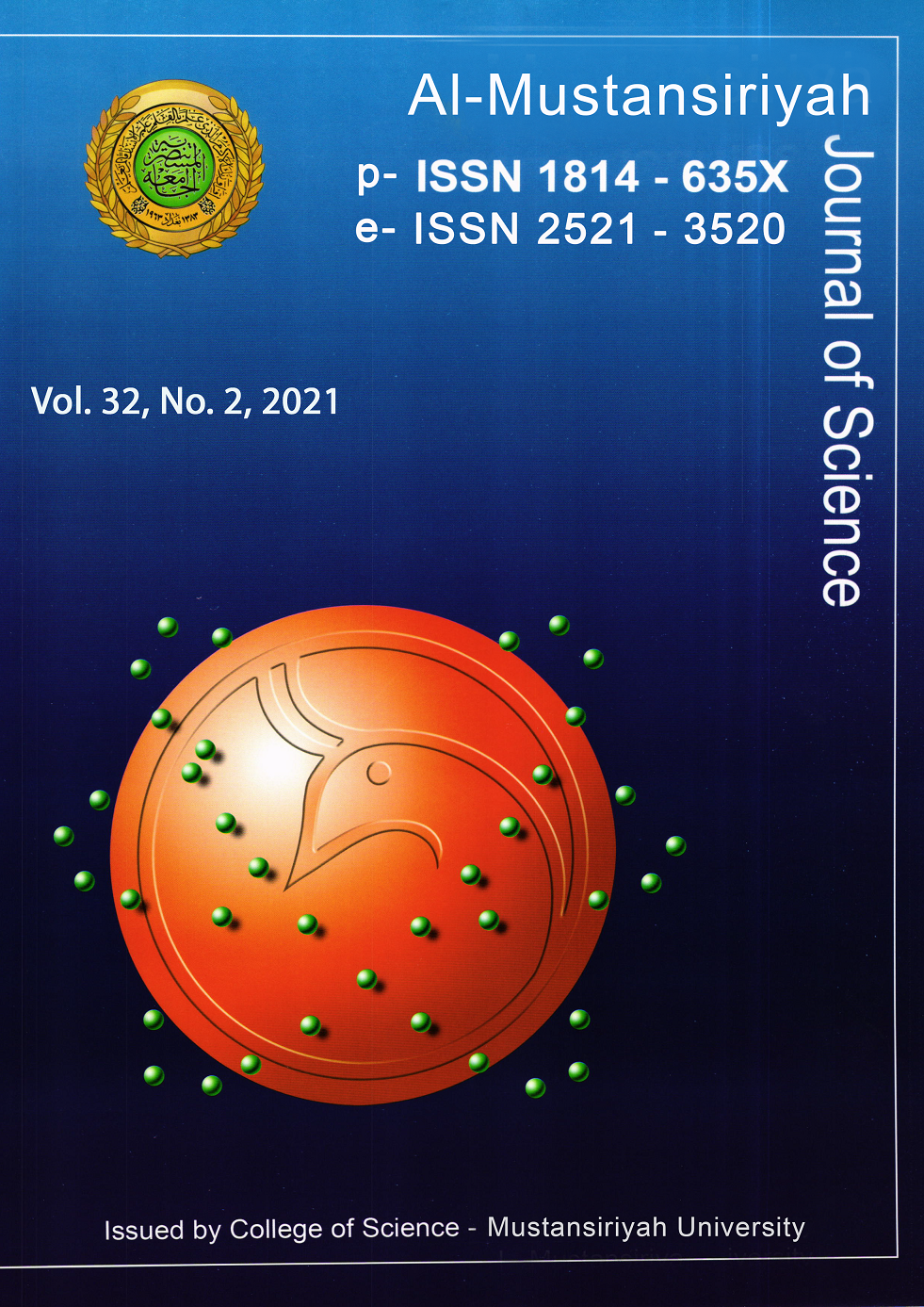Dynamical Study for Selective Extreme Events over Iraq and their Relations with General Circulations
DOI:
https://doi.org/10.23851/mjs.v32i2.985Keywords:
Climate index, Cold events, Extreme, Precipitations.Abstract
The cold events and Precipitation conditions having special attention in the last years due to their impact on human health, ecosystems, and other aspects such as agriculture, hydrology. The ECMWF ERA-Interim 12-hourly (03 and 15 UTC) total precipitations and Tmin in a 1º x 1º grid covering Iraq, from 29° N to 38° N and from 39° W to 48° E, with a total of 10 by 10 cells, was used. At each grid point, extremes were defined as those events in which total precipitations were above 99th percentile for the 25 years period 1994-2018. For more investigation, the Hybrid Single-Particle Lagrangian Integrated The trajectory (HYSPLIT) model was used to study the dynamical mechanism that led to producing the cold events in Iraq. The number of extreme precipitations patterns shows an increasing behavior in the number of extreme events especially in the last decade, farther more there is a significant increase in the number of extreme precipitations in the last three years ago. No correlations were found with NAO, EA index, in contrast, there is a significant negative correlation with winter Arctic oscillations index. The aim of this work is studying the precipitation and cold extreme events in Iraq and their relations of most hemispheric pattern which influence in the Middle East region such as North Atlantic Oscillation (NAO), East Atlantic index (EA), Artic oscillation index (AO) and Mediterranean index (MOi). We speculate that the results of this study can provide a better understanding of extreme cold and precipitations anomalies in Iraq from a large-scale view.
Downloads
References
UNDP, Elasha, B.O. Mapping of climate change threats and human development impacts in the Arab region. In: UNDP Arab Development Report-Research Paper Series. UNDP Regiona Bureau for the Arab States., (2010).
Robaa ES, Al-Barazanji Z. Mann-Kendall trend analysis of surface air temperatures and rainfall in Iraq. Idojaras. 2015 Oct 1;119(4):493-514.
Muslih KD, Błażejczyk K. The inter-annual variations and the long-term trends of monthly air temperatures in Iraq over the period 1941-2013. Theor Appl Climatol. 2017 Oct 1;130(1-2):583-96.
Salman SA, Shahid S, Ismail T, Chung ES, Al-Abadi AM. Long-term trends in daily temperature extremes in Iraq. Atmos Res. 2017 Dec 1;198:97-107.
Khidher SA, Pilesjö P. The effect of the North Atlantic Oscillation on the Iraqi climate 1982-2000. Theor Appl Climatol. 2015 Nov 1;122(3-4):771-82.
Burić DB, Dragojlović JM, Milenković MĐ, Popović LZ, Doderović MM. Influence of variability of the East Atlantic Oscillation on the air temperature in Montenegro. Thermal Science. 2018;22(1 Part B):759-66.
Malinowski JC (2003) Iraq geography, west point. United States Military Academy, New York, first edition:29-37
Al-Salihi AM, Al-Lami AM, Mohammed AJ. Prediction of monthly rainfall for selected meteorological stations in Iraq using back propagation algorithms. J Environ Sci Technol. 2013 Jan 1;6(1):16-28.
Al-Khalidi J, Dima M, Vaideanu P, Stefan S. North Atlantic and Indian Ocean links with Iraq Climate. Atmosphere (Basel). 2017 Dec;8(12):235.
Favà V, Curto JJ, Llasat MC. Relationship between the summer NAO and maximum temperatures for the Iberian Peninsula. Theor Appl Climatol. 2016 Oct 1;126(1-2):77-91.
Rodrigo FS. On the covariability of seasonal temperature and precipitation in Spain, 1956-2005. Int J Climatol. 2015 Sep; 35(11):3362-70
Wallace JM, Hobbs PV. Atmospheric science: an introductory survey. Elsevier; 2006 Mar 24. second editions,6:252-290
Ghanghermeh AA, Roshan GR, Shahkooeei E. Evaluation of the effect of Siberia's high pressure extension on daily minimum temperature changes in Iran. Model Earth Syst Environ. 2015 Oct 1;1(3):20.
Wallace JM, Gutzler DS. Teleconnections in the geopotential height field during the Northern Hemisphere winter. Mon. Weather Rev. 1981 Apr;109(4):784-812.
Draxler RR, Hess GD. An overview of the HYSPLIT_4 modelling system for trajectories. Aust Met Mag.1998 Dec;47(4):295-308.
Downloads
Key Dates
Received
Accepted
Published
Issue
Section
License
Copyright (c) 2021 Al-Mustansiriyah Journal of Science

This work is licensed under a Creative Commons Attribution 4.0 International License.
(Starting May 5, 2024) Authors retain copyright and grant the journal right of first publication with the work simultaneously licensed under a Creative Commons Attribution (CC-BY) 4.0 License that allows others to share the work with an acknowledgement of the work’s authorship and initial publication in this journal.






















